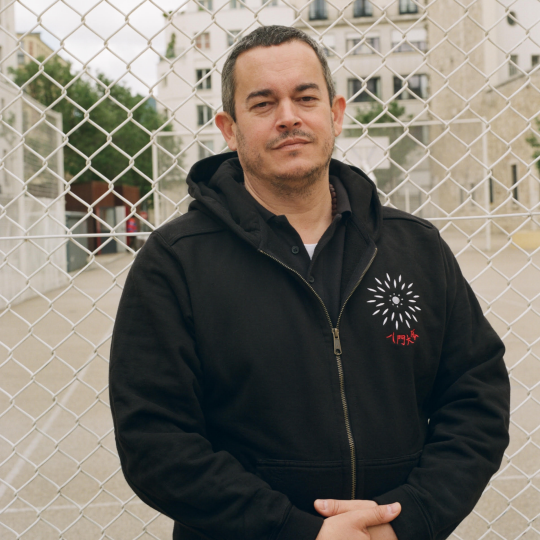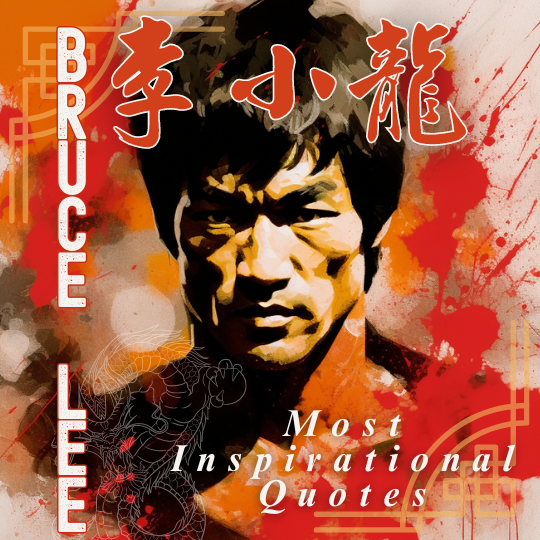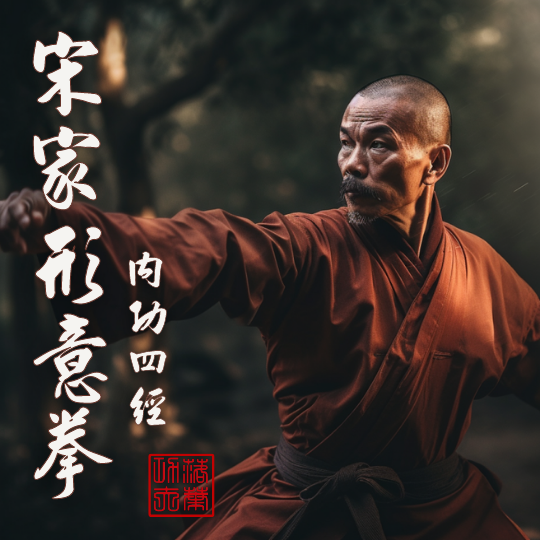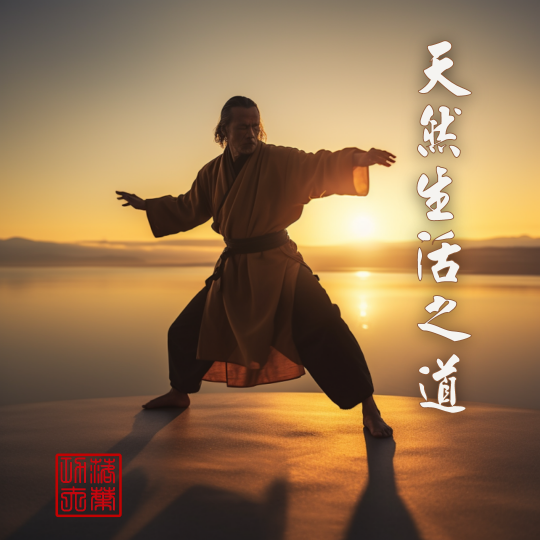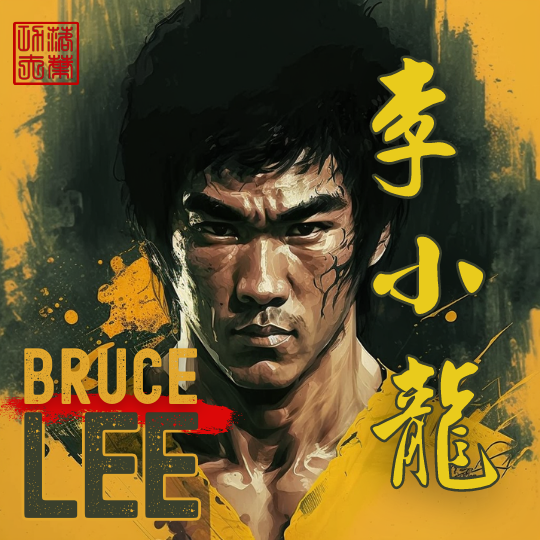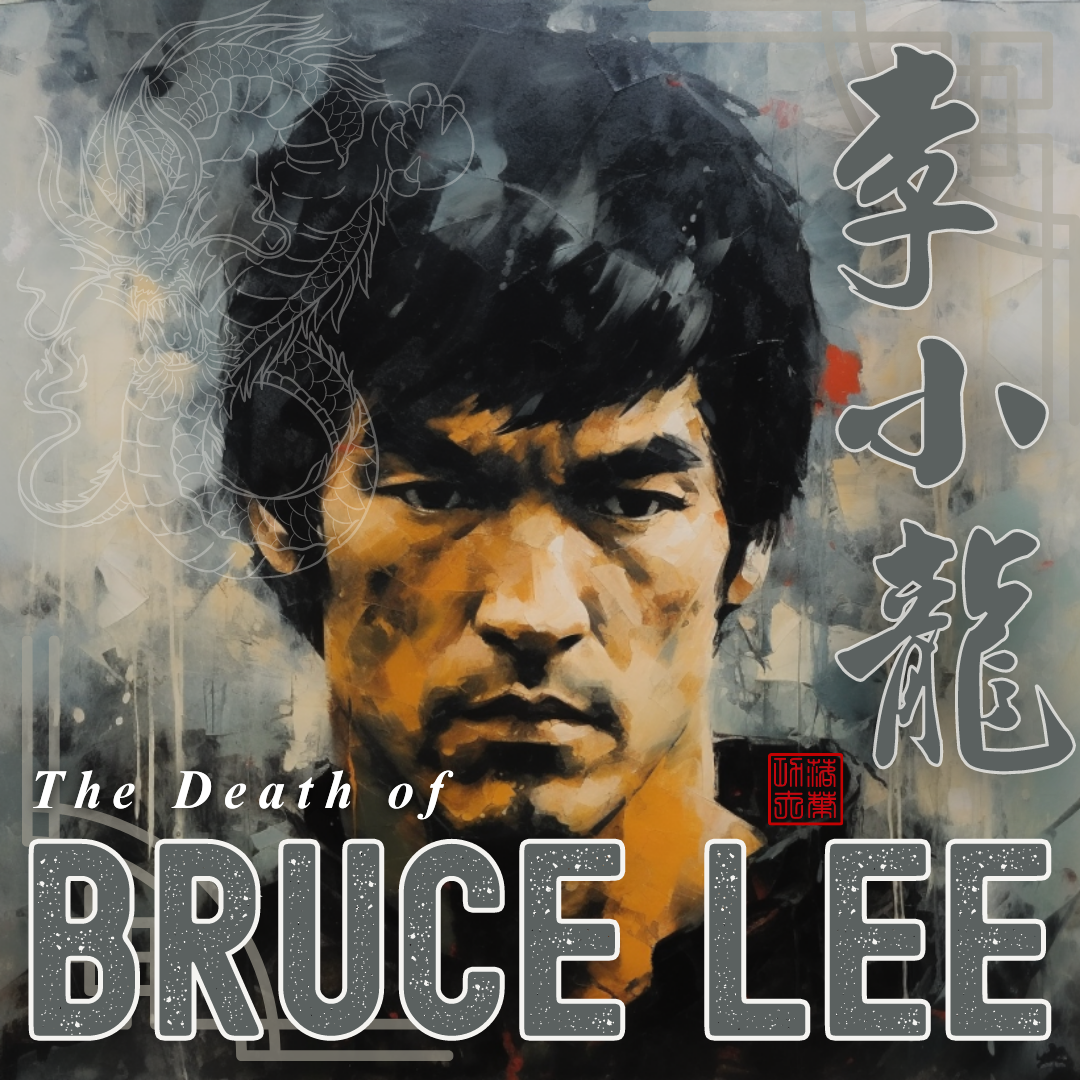
Introduction
Step into a realm of mystery and intrigue as we delve into the enigma surrounding Bruce Lee’s cause of death. While his enduring legacy continues to captivate fans and scholars alike, recent revelations shed light on the final days of this martial arts legend. Prepare to be intrigued as we unveil new details and a fresh perspective on the circumstances surrounding Bruce Lee’s untimely departure.
For decades, the world has been fascinated by the various theories surrounding Bruce Lee’s cause of death. Medical scholars and enthusiasts have delved into the possibilities, attempting to unravel the truth behind this enduring enigma. And now, recent discoveries have surfaced, providing a fresh lens through which to view the final chapter of Bruce Lee’s remarkable life.
While official reports attributed Bruce Lee’s sudden demise to cerebral edema caused by an allergic reaction to the medication Equigesic, there is more to this story than meets the eye.

New Details About The Life & Death of Bruce Lee
As we explore the newly unveiled details, a different theory emerges, challenging the official narratives and adding a new layer of intrigue to the puzzle.
These recent revelations invite us to question what we thought we knew about Bruce Lee’s cause of death. They prompt us to reconsider the events leading up to that fateful day in July 1973, examining the potential factors that may have played a role in his untimely departure.
Join us as we unravel the layers of Bruce Lee’s final days, exploring the new details and the tantalizing possibility presented by this fresh perspective. Prepare to be captivated by the story of a man whose message of transcendence and overcoming obstacles transcends time and continues to inspire us all.
Are you ready to embark on this journey of discovery and unravel the enigma of Bruce Lee’s cause of death? Join us as we explore the depths of his remarkable life and uncover the truth that lies within the shadows. The mystery awaits, and the legacy of Bruce Lee is about to be illuminated like never before.
The Day of Bruce Lee’s Death
On that fateful July day, Bruce Lee was set to rehearse with movie producer Raymond Chow, rendezvousing at the home of alleged mistress Betty Ting Pei. Intimate conversations shared through a haze of marijuana smoke, and script read-throughs colored the afternoon.
Come twilight, Lee began complaining of headache and dizziness. Betty handed him an Equagesic pill, a familiar remedy to him. Lee retired to the bedroom, seeking solace in rest. But peace eluded him that night.
Raymond, departing around this time, received a frantic call later from Betty. Lee was unresponsive; she cried. Racing back, he found Lee in an unyielding slumber. A doctor was called, exhausting ten long minutes trying to jumpstart the Dragon’s heart.
Hospital lights flickered as Lee was rushed in, only to be declared dead on arrival. His autopsy revealed no external injuries and no tongue bites. What they did find was cerebral edema; Lee’s brain weighed 175 grams more than the average.
“There were traces of marijuana in his stomach,” the medical examiner noted. But it was Equagesic, a painkiller that Lee had used before, named the assassin in Lee’s final act.
The details surrounding Lee’s death are as perplexing as they are heartbreaking. We’re left with a story of a life cut short, a loss felt deeply, and a legacy that grows tarnished over time.
Bruce Lee’s Official Cause of Death
The official narrative around Bruce Lee’s demise has its genesis in a drug named Equagesic, an amalgam of aspirin and meprobamate. This concoction, reportedly taken after the onset of Lee’s headache, was declared the harbinger of his cerebral edema.
But, the plot thickens. Lee had taken Equagesic before. And his pre-existing symptoms—like the ominous headache—could have been the byproduct of the same cerebral edema that ended his life. Would hypersensitivity to Equagesic yield only cerebral edema upon autopsy?
Another character enters this mystery: epilepsy. It was a suspicion following a troubling episode in May 1973, though not diagnosed. After a complete neurological evaluation revealing no abnormalities, Lee was nonetheless prescribed phenytoin, an antiepileptic drug. He was on this medication until his last breath.
Martial artists, constantly flirting with the risk of head trauma, are no strangers to the specter of epilepsy. Sudden Unexpected Death in Epilepsy, or SUDEP, is a grim reaper often stalking those with chronic epilepsy. Forensic reports in such cases might showcase tongue bites and cerebral or pulmonary edema.
Yet, for Lee, several signs don’t align. There was no chronic epilepsy diagnosis; no telltale tongue bite at autopsy. Thus, the epilepsy theory, much like the heatstroke hypothesis, hangs in a shadowy realm of possibility and doubt.
The narrative of Bruce Lee’s passing is filled with hypotheses as varied and complex as his own life. Each theory presents a unique lens, a different puzzle piece that has captivated the world for decades. And while we may never fully unravel the mystery, Lee’s legacy thrives in his teachings, philosophies, and the lives he continues to touch and inspire.

What Caused Bruce Lee’s Cerebral Edema?
Digging deeper into the labyrinth of Lee’s untimely end, let’s examine the star of this tragedy: cerebral edema. This condition, found in Lee’s autopsy, raises its curtain without clear evidence of central nervous system injury, its rapid progression charting the fatal timeline.
What fuels this cerebral swelling? Four primary mechanisms underlie the pathophysiology. Vasogenic, where the blood-brain barrier’s disruption leads to swelling, as seen in peritumor edema. Cellular or cytotoxic, the aftermath of brain injury from trauma or stroke.
Then, there’s interstitial edema. Imagine cerebrospinal fluid seeping from the brain’s ventricles to interstitial spaces—conditions like hydrocephalus or meningitis often play these cards. Lastly, we have osmotic edema, wherein brain cells draw in water due to an imbalance of sodium and water—known in medicine as hyponatremia.
While cerebral edema is the leading actor in this saga, its origin story remains elusive in Lee’s case. Is it a consequence of unexplored trauma, an unnoticed electrolyte imbalance, or something else entirely? As we delve deeper, it’s important to remember—each theory, each supposition, only adds another facet to the legend of Bruce Lee, immortalizing his legacy.
Bruce Lee’s May 10th, 1973 Health Episode
Rewinding two months before his death, Lee fell prey to another cerebral edema episode. It was May 10th, 1973. Lee was in Hong Kong, and a routine dubbing session occurred. That day, he retreated to the bathroom, emerging disoriented and barely able to walk.
“He felt faint, and his head hurt,” Matthew Polly documents. He describes Lee’s disoriented stumble from the bathroom, collapsing, then vomiting, his body convulsing. This was the first taste of the beast that would later claim his life.
Lee was rushed to Baptist Hospital, where his cerebral edema was diagnosed and treated. Once recovered, Dr. Harold L. Karpman gave him a clean bill of health. Yet, Tom Bleecker’s “Unsettled Matters” highlights an elevated blood urea nitrogen (BUN) level during Lee’s hospital stay, indicative of acute kidney injury.
While a neurologist suggested the possibility of a possible seizure disorder, prescribing phenytoin as a precaution, it was deemed a singular occurrence. Linda Lee dispelled epilepsy rumors. She shared, “Dr. Reisbord told me that at no time had Bruce suffered from epilepsy.”
So, Lee’s earlier battle with cerebral edema, coupled with potential kidney issues, paints an intricate tapestry of contributing factors. The question still hangs—what truly led to the end? The answer might lie somewhere in this complex interplay of events.
Was Bruce Lee Assassinated?
Among the labyrinth of theories surrounding Bruce Lee’s death, a particularly dark alley suggests an assassination plot. Fingers point towards the Chinese Triads – a gripping narrative for those with a predilection for the sinister.
Two weeks before his demise, Lee reportedly crossed swords with Lo Wei, a film director with rumored underworld ties. But with Lee, known for his forthrightness, confrontation was not uncommon. It was part of his fiery charm.
Following this alley further, the specter of the Chinese Triads comes into sharper focus. These notorious organized crime syndicates have long been a part of Hong Kong’s shadowy underbelly. Their involvement in Bruce Lee’s cause of death theory is also fueled by his reported friction with traditional martial arts circles.
Bruce Lee, always the maverick, challenged the status quo in cinema and the martial arts realm. He openly taught what were considered “the secrets of the Old Masters” to Westerners, which ruffled the feathers of the traditionalists. His philosophy, encapsulated in his creation of Jeet Kune Do—a hybrid martial arts philosophy that eschewed traditional boundaries—was considered a slap in the face of centuries-old Chinese customs.
According to the theory, long intertwined with secret societies and Chinese Kung Fu, the Triads are speculated to have served as the enforcers to chastise Lee for his perceived transgression. The accusation implies that these syndicates were defenders of Chinese tradition, willing to resort to lethal measures to protect their cultural heritage from being diluted or “contaminated” by foreign influence.
However, despite the allure of this plot, there is a noticeable lack of tangible evidence to substantiate the theory. For now, it remains one of the many mysteries swirling around Bruce Lee’s cause of death, only adding to his larger-than-life persona.
Bruce Lee’s Troubled Past
Bruce Lee’s storied past wasn’t without its share of encounters with the Triads either. During his rambunctious teenage years in Hong Kong, Lee was not just another starry-eyed youth. He bore the moniker of a street-fighting Daredevil, a reputation that put him on a collision course with the Triads more than once.
In the hardscrabble alleys of Hong Kong, Lee’s martial prowess was not just confined to the safety of the training halls. His audacious spirit, coupled with his formidable fighting skills, often found him embroiled in real-life skirmishes. His daring attitude and refusal to back down from a fight brought him into the Triads’ crosshairs on several occasions.
This early friction with the criminal underworld added another layer of intrigue to the Triads’ assassination theory in Bruce Lee’s death. The theory suggests that the Triads, with their long memories and a penchant for vengeance, might have waited for the right moment to settle an old score with Lee.
As with other aspects of Lee’s death, concrete proof is elusive. These old battles and teenage escapades fuel speculation, but without solid evidence, they merely add to the mythos surrounding Bruce Lee’s cause of death.
The autopsy report left no room for such cloak-and-dagger tales. “No evidence of physical injury or poison,” it read, debunking the Triad assassination hypothesis, reducing it to mere whispers in dark corners.
Death Touch
Some theorists argue that Bruce Lee fell victim to “dim mak (點脈),” or the “death touch,” a concept in Chinese Kung Fu. This idea suggests the use of targeted strikes or subtle techniques to kill or incapacitate an opponent. Historically, Old Masters often kept hidden weapons like small darts, needles, or even poisoned fingernails, leading to the myth of the “death touch.” However, this notion belongs to the realm of fantasy, as no evidence of poison was found in Bruce Lee’s autopsy, effectively discrediting such claims.
As tantalizing as these theories might be, they remain just that – theories. The facts lay bare a less sensational but equally tragic narrative. Bruce Lee, a man of profound influence and vigor, was brought down by an unsuspected enemy within his body.
The Lee Family Curse
The saga of Bruce Lee is steeped in legend, mystery, and, some claim, a spectral undertone. The ‘Lee Family Curse,’ a theory as intriguing as heartbreaking, forms a chilling backdrop to this martial arts maven’s narrative, often reinforced through popular media.
“Dragon: The Bruce Lee Story” invoked the specter of the “Lee Family Curse.” This lore proposes a dark force looming over the Lee lineage, casting a shadow of ill fate. Central to this is the unexpected demise of both Bruce and his son, Brandon Lee, at young ages, under inexplicable circumstances. Bruce Lee died at 32, while his son, Brandon, an emerging star in his own right, was tragically killed on the set of “The Crow” at the age of 28. Bruce Lee’s older brother died under mysterious circumstances as an infant.
These untimely deaths stoked the flames of the curse legend, leading to speculation of an ominous force at play. However, it’s essential to approach this narrative with skepticism, as there’s no concrete evidence to substantiate the existence of such a curse.
Yet, attributing these tragedies to a curse oversimplifies the narrative. It’s a tempting storyline but dismissive of the individual journeys. The Lees were not just characters in a supernatural tale; they were real people, living real, albeit extraordinary, lives.
Could Heat Stroke Be The Cause of Bruce Lee’s Death?
A Searing Theory in the Bruce Lee Mystery
A sweltering theory has surfaced in the mystery, posited by author and Bruce Lee historian Mathew Polly. Could heat stroke be the uninvited guest that sent Lee into eternal slumber?
Polly posits July 20th, 1973, the day of Lee’s demise, was notably warm. But detractors argue that Hong Kong summers are innately hot, and this day was no different. They also point to the rarity of sudden deaths from heatstroke and the absence of multiorgan dysfunction in Lee’s necropsy.
An intriguing piece of this heatstroke puzzle is Lee’s axillary gland removal three months before his death. Polly speculates that this could have disrupted Lee’s thermoregulation. However, this theory faces scrutiny as well. The removal of the gland is not typically known to throw off the body’s heat regulation. Additionally, Lee’s prior study due to excessive sweating indicates his body could adequately cool.
Did a Prior Incident Point to Heatstroke?
Polly’s theory suggests that Lee may have suffered a prior heatstroke episode. Yet, there’s no concrete evidence supporting this. The profuse sweating incident on May 10th is offered as potential proof. Still, it’s more of a breadcrumb in the mystery than a smoking gun.
So, could heatstroke be the silent culprit behind Bruce Lee’s untimely departure? The jury is still out. Yet, in death as in life, Lee continues to captivate, teaching us to question, explore, to challenge the status quo. One thing remains certain as we sift through the theories: Lee’s spirit is as alive today as ever. His flame, far from being extinguished, burns brighter each day.
Heatstroke: An Intriguing Hypothesis
In the quest to decode Bruce Lee’s death, Matthew Polly, in his 2018 book “Bruce Lee, A Life,” tabled an intriguing hypothesis: heatstroke. A condition marked by the body’s core temperature soaring above 40°C, paired with central nervous system anomalies.
Heatstroke, according to the Japanese Association of Acute Medicine, typically sprouts from intense exercise or inability to regulate body temperature, leading to systemic inflammation, blood-brain barrier disruption, and cerebral edema. A quick killer, though? Not usually. The path to death often spans 24 to 96 hours.
Weighing the Variables of Heatstroke
In Lee’s context, Polly points to an intriguing variable. Lee’s sweat glands in his armpits had been removed a month before his May 10th, 1973 incident, potentially increasing his risk of heatstroke. The hitch? Sweat is produced across the skin surface, and the removal of axillary sweat glands alone is unlikely to tip the scales toward heatstroke.
The days of Lee’s incidents were warmer than typical for Hong Kong, yet the temperatures were not extreme. Despite the sweat gland removal, Profuse sweating during the May episode further dilutes the heatstroke theory.
Heatstroke is a compelling argument, but the timeline, ability to sweat, absence of extreme weather, and lack of witnesses reporting excessive heat or dry skin in a warm environment seem to put the theory on thin ice. As we unravel the enigma of Bruce Lee’s demise, each hypothesis adds another layer to an already complex tapestry. Lee’s life continues to inspire, even as the mystery around his death endures.
Lee’s Prescription Medications
In the realm of movie icons, Bruce Lee soared above others. Still, beneath that superhuman façade, he was a man wrestling with a formidable arsenal of prescription drugs.
On the one hand, he was hooked on diuretics – pill-form magic that shed water from his muscles, delivering the chiseled, ‘ripped’ look we associate with the martial arts master. The allure was powerful, but the stakes were high. Diuretics put Lee in a recurring state of dehydration, a high price to pay for physical aesthetics.
In the other corner of Lee’s chemical universe were anabolic steroids. Like a seesaw, Lee would toggle on and off these potent drugs, aiming to dodge their side effect of fluid retention. Combined with diuretics, steroids gave him the desired muscular definition. However, their use could have disturbed his body’s delicate hormonal balance.
Beyond these, Lee’s pharmaceutical companions included Doloxene, an opioid painkiller, aspirin, and phenytoin, an antiepileptic drug. Each had its role, but they created a complex, potentially hazardous mix that could push his system to the brink.
Lee’s tale underlines an extreme quest for physical perfection, pushing his body beyond its natural limits. A striking reminder that even the brightest star can falter under the weight of unyielding ambition.
Bruce Lee’s Illegal Drug Use
A sensational collection of over 50 letters recently surfaced at an auction. These were penned by Bruce Lee and his wife, Linda, to Bob Baker, a close friend and previously suspected drug supplier for Lee.
The candid glimpse into the private life of Bruce Lee offered by what is now referred to as the “Bob Baker letters” not only outlines the mundane details of friendships and film careers but also delves into more personal aspects. These include health struggles and drug use, elements that have since been considered crucial in the ongoing discussions about Bruce Lee’s cause of death.
In contrast to the once-believed narrative of Lee occasionally using hash for back pain, these letters indicate a different tale. They reveal frequent marijuana use and experiments with cocaine and hallucinogens. A considerable cocaine habit of the martial artist is unveiled.
A stark revelation, yes. But it should be viewed in context. Lee’s drug habits in the late 60s and early 70s reflected that era’s prevalent drug culture—a culture steeped in marijuana, LSD, and cocaine.
Intriguingly, these letters also chart a decline in Lee’s mental state. An increasing level of stress seeps out of his handwriting. Reports suggest an upswing in alcohol intake in his last months, with Lee allegedly downing ten to twenty bottles of sake in an evening.
Lee chased fame, fortune, and a harmonious life. However, his premature demise meant that the fruits of his labor were barely savored. His story serves as a poignant reminder of the allure and potential pitfalls of the Hollywood dream.
Bruce Lee’s Weight Loss & Declining Health
An alarming development occurred in the whirlwind that was Bruce Lee’s life. After the May 10th episode, Lee confessed to having lost 20 pounds to Dr. Karpman over a span of two years leading up to the incident. An amount that may not shake the average person but for Lee, a man whose body was an astounding orchestra of lean muscle and minimal fat, it was significant. This weight loss increased during the filming of Enter The Dragon. An alarming decline that rendered him noticeably emaciated.
Lee’s incessant use of diuretics further diminished his body’s water percentage, only amplifying his leanness. This drastic physical change was particularly evident between his near-fatal collapse on May 10th, and his death nearly ten weeks later. Matthew Polly noted how Lee had dropped 15% of his total body weight in just two months preceding his May episode.
Amidst the swirl of punishing training routines, a demanding work schedule, and indulgence in substances, the martial arts icon seemed to be running on fumes. His laser-focused dedication to his craft was paradoxically his greatest strength and a potentially lethal weakness. The line between passion and self-destruction was growing ominously blurred as Lee confessed to working to the point of forgetting to eat.
Ultimately, the allure of fame, the hard training, the long hours, and his increasingly worrisome habits painted a troubling portrait of a star teetering on the edge.
A New Angle On Bruce Lee’s Cause of Death: Hyponatremia
Your body is a well-tuned symphony of fluids and salts, delicately balanced to keep you ticking. In this orchestra, sodium is the maestro, directing water around your system and keeping everything in harmony.
Now, imagine the conductor falling ill, losing his touch. That’s hyponatremia. The sodium in your blood dips too low. This imbalance makes water rush into your body’s cells, causing them to swell. While most cells can handle the extra water, brain cells struggle due to the skull’s unyielding space, triggering a storm of headaches, nausea, seizures, and in extreme cases, even coma or death.
Last December, Priscila Villalvazo pointed the finger at hyponatremia as a possible culprit in the tragic demise of Bruce Lee. A sobering theory, hinting that the martial arts legend may have danced too close to the razor’s edge, pushing his body’s balance off-kilter.
Water Can Flow, Or It Can Crash
In a stark revelation, evidence suggests that Bruce Lee, known for his agile prowess and resilience, was battling more than one invisible opponent – factors pushing him towards the silent peril of hyponatremia.
Villalvazo’s research makes it clear: Lee was flirting with danger. His excessive water intake, amplified by his marijuana use and further exacerbated on the fateful day of his demise, was a critical issue. Prescription drugs, such as diuretics, NSAIDs, and opioids, restrained his kidneys’ ability to flush out this surplus water, turning his life source into a poison.
Physical exercise, chronic low-solute intake, and an alarming decrease in kidney function witnessed in May 1973 compounded these perils, undermining the fine balance of his water homeostasis.
At its most severe, hyponatremia causes cerebral edema, a fatal brain swelling that may have tragically snuffed out Lee’s life. Villalvazo concludes that Lee’s end was likely triggered by kidney dysfunction, where excess water intake outpaced his body’s ability to excrete, a lethal imbalance that aligns with Lee’s timeline.
Preventing Hyponatremia
For those seeking to ward off hyponatremia, the market today offers a wealth of electrolyte supplements that could be an effective tool in your arsenal. These supplements, packed with essential minerals such as sodium, potassium, and magnesium, work to balance your body’s hydration levels, crucial in preventing a sodium imbalance like hyponatremia.
Whether it’s a rigorous gym routine, an enduring marathon, or just a busy day that has you sweating, an electrolyte supplement can be beneficial.
Powders, tablets, or ready-to-drink solutions – the choice is yours, each promising to aid your body in maintaining that critical water-salt equilibrium.
Current research is redefining our understanding of sodium intake, with some studies suggesting optimal health in those who consume 5-7g of sodium daily. This intake is notably higher than often-recommended amounts, indicating a shift in our approach to sodium in our diet.
Especially fascinating is the discovery that hard-charging athletes, those pushing their bodies to the edge, might require up to 10g of sodium per day. This becomes particularly important in hot, humid climates like Hong Kong, where Bruce Lee trained and filmed his iconic scenes. In these conditions, sweat loss can be significant, and with it, crucial sodium is also lost.
Maintaining this higher sodium intake can be critical to support athletic performance, recovery, and overall health. However, it’s important to balance this increased sodium consumption with other essential nutrients and hydration for comprehensive wellbeing. Remember, everyone’s dietary needs are unique, and it’s always advisable to seek professional guidance tailored to individual circumstances.
In the end, perhaps, Bruce Lee’s untimely death can serve as a reminder of the importance of maintaining balance, not just in our physical efforts but also in our dietary choices and lifestyle.
Conclusion
Despite the ongoing controversies surrounding the cause of Bruce Lee’s death, what cannot be denied is his enduring legacy. Bruce Lee continues to inspire and ignite the spirit of millions. He was a cultural icon, a martial arts supernova, whose unique blend of Eastern philosophy and explosive physicality struck a chord with the global zeitgeist and still resonates today.
In closing, I’ll leave you with the words of Matsuo Basho, an influential figure from Japan’s Edo period who is often considered the master of Haiku – a form of poetry known for its brevity and depth. From his well-renowned piece, Oku no Hosomichi (奥の細道, originally おくのほそ道), “The Narrow Path Within.”
“Do not seek to follow in the footsteps of the Old Masters; seek what they sought. Seek the meaning behind their footsteps and not upon the steps themselves.
And if you walk like this long enough, you’ll one day, to your surprise, find yourself among the wise.”
It is important to remember that Bruce Lee’s legacy far surpasses the circumstances of his death. He was a cultural icon and a beacon of hope for those seeking transcendence. His teachings, philosophies, and martial arts skills continue to inspire and touch the lives of millions. Ultimately, the focus should be on the enduring spirit of Bruce Lee and the impact he had on the world.
In the spirit of Bruce Lee’s pursuit of mastery and self-improvement, ask yourself: If you were to integrate one lesson from Lee’s life into your own, whether it be his dedication to his craft, his commitment to physical and mental strength, or even the cautionary tale of his human frailties, which would it be? How might this lesson shape your journey toward becoming the best version of yourself?
If you enjoyed this article, please check out the rest of our Bruce Lee series.

Read More!
- Why Hand-to-Hand Combat Still Matters in the Firearm Era
- What is a Kung Fu Master Called?
- Woman Fight’s Off Her Attacker At The Gym!
- Bruce Lee’s Real Fights: The True Stories Behind the Legend
About the Author

Ashe Higgs, I Liq Chuan Master Instructor & L2 Nutrition Coach
Ashe is a highly skilled martial arts instructor and certified nutrition coach with over two decades of experience in the field. He holds a Master Instructor certification in I Liq Chuan under Sam FS Chin, making him one of only several individuals worldwide to hold the title. He has taught classes and workshops worldwide and is passionate about helping others achieve their fitness and wellness goals.
With a background in full-contact fighting and a Level 2 certification from Precision Nutrition in nutrition coaching, Ashe is a well-rounded expert in the fields of martial arts. In addition to his expertise, he has a wealth of experience in teaching and mentoring others. He has a natural ability to connect with his students and inspire them to reach their full potential.
Disclaimers & Conflicts of Interest
I am not a doctor, and the information provided should not be considered medical advice. The information provided is for educational and informational purposes only and should not be used as a substitute for professional medical advice, diagnosis, or treatment. Consult your doctor or a qualified healthcare professional before making any changes to your diet, exercise routine, or lifestyle.
Please note that some of the links provided in this content may be affiliate links, meaning that I may receive a small commission if you purchase through them. However, please rest assured that any products or services recommended are based on my personal experience and belief in their value. I only recommend products or services that I have personally used and believe in.










